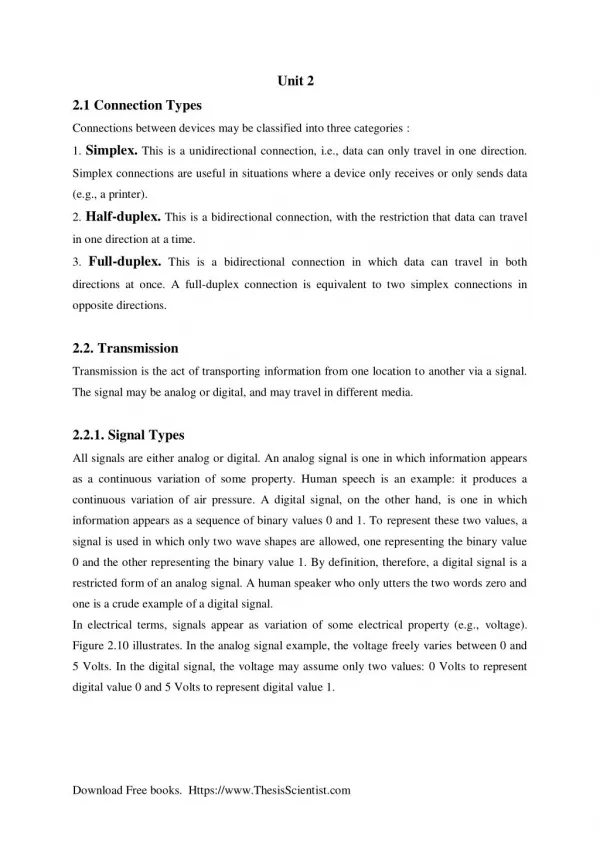Computer networks basics
All signals are either analog or digital. An analog signal is one in which information appears as a continuous variation of some property. Human speech is an example: it produces a continuous variation of air pressure. A digital signal, on the other hand, is one in which information appears as a sequence of binary values 0 and 1. To represent these two values, a signal is used in which only two wave shapes are allowed, one representing the binary value 0 and the other representing the binary value 1. By definition, therefore, a digital signal is a restricted form of an analog signal. A human speaker who only utters the two words zero and one is a crude example of a digital signal. In electrical terms, signals appear as variation of some electrical property (e.g., voltage). Figure 2.10 illustrates. In the analog signal example, the voltage freely varies between 0 and 5 Volts. In the digital signal, the voltage may assume only two values: 0 Volts to represent digital value 0 and 5 Volts to represent digital value 1.
★
★
★
★
★
542 views • 51 slides
